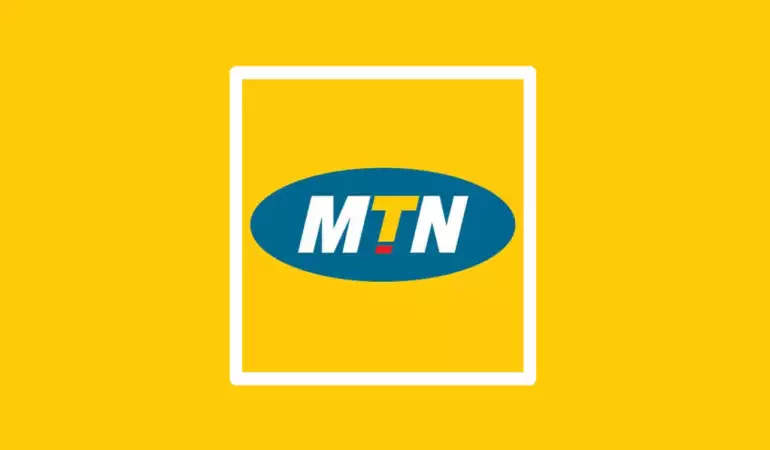Create U.S. Bank Account
Experience personalized banking services for your unique needs with U.S. Bank - Checking, credit cards, home loans & convenient online banking. Member FDIC.
November 25, 2024 03:18
Opening a U.S. bank account is a crucial step for managing finances efficiently, whether you’re a resident or a non-resident. With modern banking solutions, you can open an account either online or through a mobile app, ensuring convenience and ease.
This guide walks you through every step, from choosing the right bank to activating your account.
Types of Bank Accounts in the U.S Bank
When opening a U.S. bank account, understanding the types of accounts available is vital. Here are the main options:
- Checking Accounts: Ideal for everyday transactions like paying bills or shopping.
- Savings Accounts: Designed for saving money while earning interest.
- Business Accounts: Tailored for managing business finances.
- Specialized Accounts: Accounts for students, non-residents, or specific needs.
Each account type serves a unique purpose, so choose one based on your financial goals.
Prerequisites for Opening a U.S. Bank Account
Before you start the process, ensure you meet the following requirements:
- Identification: Valid ID, such as a passport or driver’s license.
- SSN or ITIN: Necessary for most accounts; non-residents may use ITIN.
- Proof of Address: Recent utility bill or lease agreement.
Some banks may have additional eligibility criteria, especially for non-residents.
Choosing the Right Bank
Selecting the right bank depends on your preferences and needs. Consider these options:
- Traditional Banks: Offer a wide range of services and physical branches (e.g., Chase, Wells Fargo).
- Online Banks: No physical branches but often provide lower fees and higher interest rates (e.g., Ally Bank, Chime).
- Credit Unions: Member-owned institutions known for customer-centric services.
Research and compare the benefits and drawbacks of each before deciding.
How to Open a U.S. Bank Account via Website
Here’s a step-by-step process for opening a U.S. bank account through a bank’s website:
- Visit the Bank’s Official Website: Navigate to the bank’s homepage and locate the “Open Account” section.
- Fill Out the Online Application: Enter personal details such as name, address, and SSN or ITIN.
- Upload Required Documents: Provide scanned copies of your ID and proof of address.
- Submit and Verify: The bank may take a few days to verify your details.
- Complete Initial Deposit: Fund your account through a transfer or deposit.
If you face issues, reach out to the bank’s support team for assistance.
How to Open a U.S. Bank Account via Mobile App
Opening a bank account via a mobile app is convenient and often quicker than the traditional process. Here’s how you can do it:
- Download the Bank’s App: Search for the official mobile app of your chosen bank in the Apple App Store or Google Play Store.
- Create an Account Profile: Once the app is installed, select the option to open a new account and provide your email and mobile number.
- Submit Required Details: Enter personal information, including your name, address, and Social Security Number (SSN) or ITIN.
- Upload Digital Copies of Documents: Use the app’s built-in camera feature to scan and upload your identification and proof of address.
- Review and Confirm: Double-check all the entered details, agree to the terms, and submit your application.
- Fund Your Account: Transfer money via a linked account or debit card to make the initial deposit.
Mobile apps often come with added features like instant card issuance, virtual account numbers, and digital wallets, making them a preferred choice for tech-savvy users.
Account Activation and Initial Deposit
After opening the account, activation is the next crucial step. Most banks require an initial deposit to activate the account fully. Here’s how to complete this process:
Methods of Deposit:
- Wire Transfer: Transfer money from another bank account.
- Cash Deposit: Visit a branch or ATM to deposit cash.
- Direct Deposit: Set up direct deposits with your employer for future transactions.
Minimum Deposit Requirements:
- Some banks require as little as $25, while others may ask for $100 or more. Check your bank’s policy to ensure you meet the minimum requirement.
Account Verification:
- Once the deposit is made, the bank will verify the transaction and activate the account. You’ll receive an email or text confirmation.
An initial deposit not only activates the account but may also help you qualify for welcome bonuses offered by some banks.
Understanding Fees and Charges
Before finalizing your account, familiarize yourself with the fees associated with it. Here are some common charges to watch out for:
Maintenance Fees:
- Monthly fees that some banks charge for account upkeep.
- Many banks waive these fees if you meet specific criteria, such as maintaining a minimum balance or setting up direct deposits.
ATM Fees:
- Charges for withdrawing cash from out-of-network ATMs.
- Look for banks offering a large network of free ATMs.
Overdraft Fees:
- Penalties incurred when your account balance falls below zero.
- Consider opting for overdraft protection if offered.
Hidden Charges:
- Miscellaneous fees for services like paper statements or international transactions.
Understanding these fees will help you manage your account more effectively and avoid unnecessary costs.
Setting Up Online and Mobile Banking
Online and mobile banking offer unparalleled convenience. Here’s how to set them up:
Create Online Credentials:
- Visit the bank’s website or open the app and register using your account number and personal details.
- Set up a username and a strong password.
Link Your Mobile Device:
- Many banks use two-factor authentication (2FA), which involves linking your phone to receive security codes for login.
- Enable biometric login (fingerprint or face recognition) if available.
Explore Key Features:
- Bill Pay: Pay utility bills directly from your account.
- Transfers: Transfer money to other accounts within or outside the bank.
- Transaction History: Monitor your spending and check your balance in real-time.
Efficient use of online and mobile banking saves time and ensures secure, hassle-free transactions.
Tips for Managing Your U.S. Bank Account
Managing your bank account wisely is key to avoiding fees and maximizing benefits. Here are some tips:
Monitor Account Activity: Regularly review transactions to identify unauthorized charges or discrepancies.
Avoid Overdrafts:
- Keep a buffer balance to avoid overdraft fees.
- Set up account alerts to notify you of low balances.
Secure Your Online Account:
- Update passwords regularly and avoid using public Wi-Fi when accessing your account.
- Enable security features like two-factor authentication (2FA).
Optimize Savings:
- Transfer excess funds to a savings account to earn interest.
- Consider setting up automatic transfers to build savings over time.
By following these practices, you can maintain financial stability and keep your account secure.
Opening a U.S. Bank Account as a Non-Resident
Non-residents can open U.S. bank accounts, but the process involves additional steps:
Required Documents:
- Passport as primary identification.
- Proof of foreign residency.
- ITIN (Individual Taxpayer Identification Number) instead of SSN.
Best Banks for Non-Residents:
- Many banks cater specifically to international customers, such as Citibank and HSBC, which offer tailored account options.
Tax Implications:
- Non-residents may need to comply with U.S. tax laws, especially if earning income in the U.S.
- Consult a tax advisor to understand your obligations.
Non-resident accounts are ideal for individuals working, studying, or conducting business in the U.S., offering a gateway to the American financial system.
Common Challenges and Solutions
While opening a U.S. bank account is straightforward, some challenges may arise:
Document Issues:
- Lack of proper ID or proof of address can delay the process.
- Solution: Check the bank’s requirements and ensure all documents are in order before applying.
Address Verification Problems:
- Non-residents may struggle with providing a U.S. address.
- Solution: Use a friend’s address or consider banks that accept international addresses.
Rejection of Application:
- Applications may be denied due to incomplete information.
- Solution: Contact customer support to resolve the issue or explore alternative banks.
Being prepared and informed will help you navigate these challenges effectively.
Benefits of a U.S. Bank Account
Opening a U.S. bank account comes with several advantages:
Ease of Transactions: Simplifies day-to-day transactions like bill payments and shopping.
Access to Payment Systems: Enables the use of popular U.S. payment platforms like PayPal, Venmo, and Zelle.
Tax Reporting: Streamlines tax filing for individuals earning income in the U.S.
A U.S. bank account is essential for anyone looking to establish a financial presence in the United States.
Closing an Account
Closing your bank account might be necessary if you’re switching banks or relocating. Here’s how to do it:
When to Close:
- High fees, poor customer service, or moving abroad.
Steps to Close:
- Withdraw remaining funds and ensure all pending transactions are cleared.
- Contact the bank and submit a closure request.
- Obtain a closure confirmation for your records.
Avoiding Hidden Charges:
- Ensure there are no outstanding fees before closing.
Closing an account properly ensures a smooth transition to your next banking arrangement.
Tips for Managing Your U.S. Bank Account
- Maintain a sufficient balance to avoid overdraft fees.
- Use online banking tools to track your spending and manage finances.
- Regularly update your personal information to avoid service interruptions.
Benefits of Online and Mobile Banking
- Convenience: Access your account anytime, anywhere.
- Security: Advanced encryption protects your transactions.
- Efficiency: Handle multiple tasks like transfers and bill payments without visiting a branch.
Conclusion
Creating a U.S. bank account through web or mobile platforms is a straightforward process when you follow the right steps. Whether you’re a resident or non-resident, these platforms provide convenience and flexibility for managing your finances.











